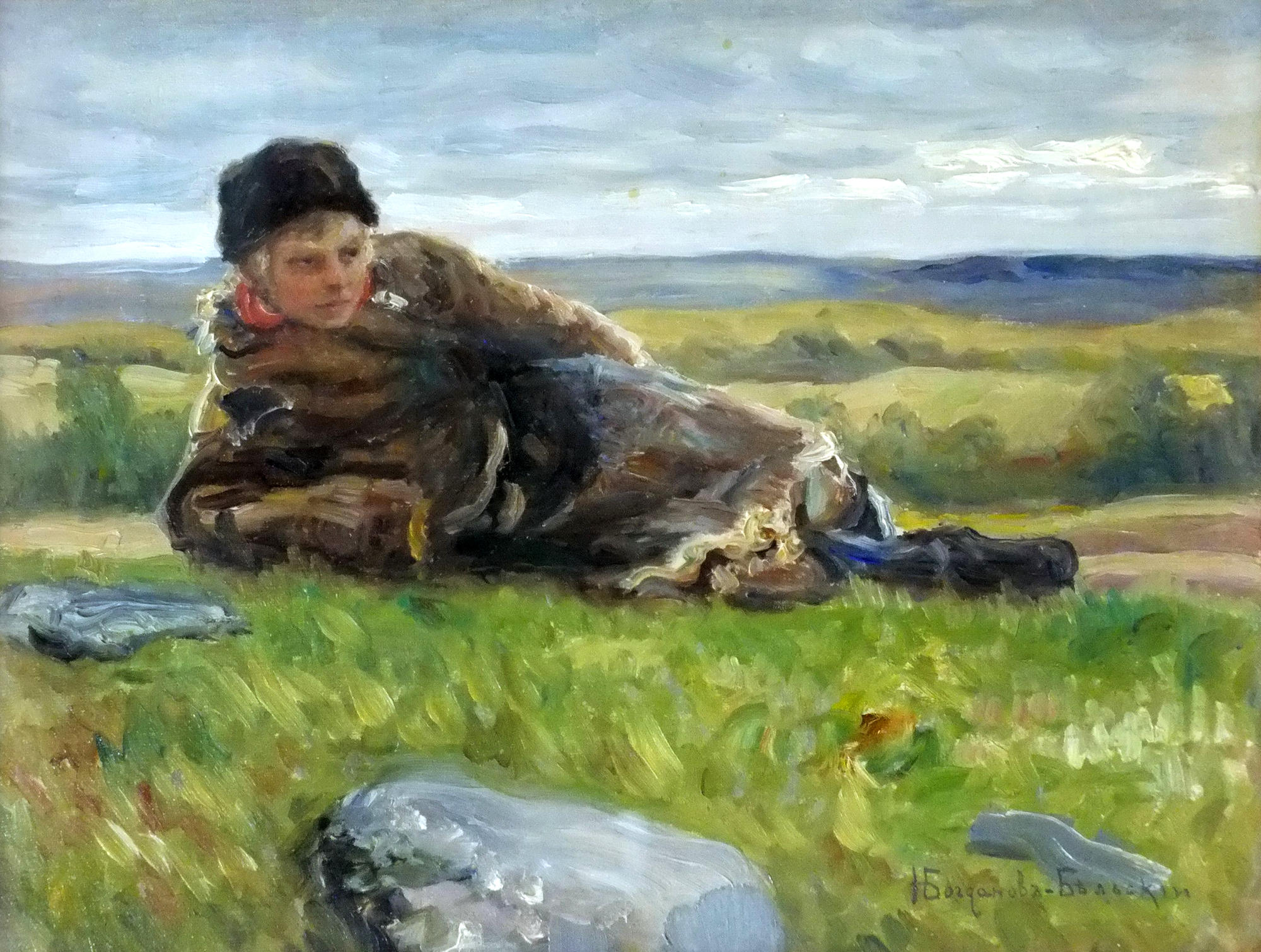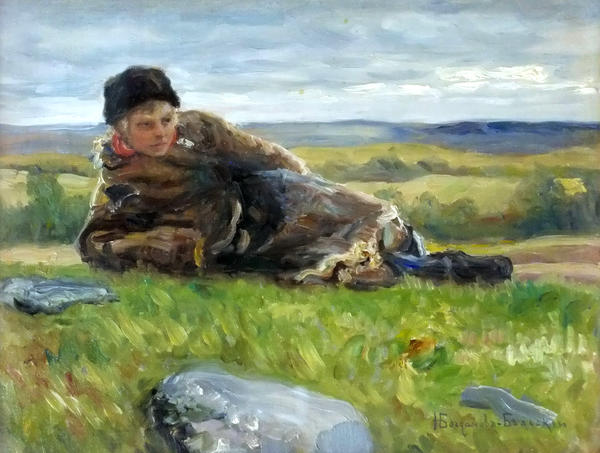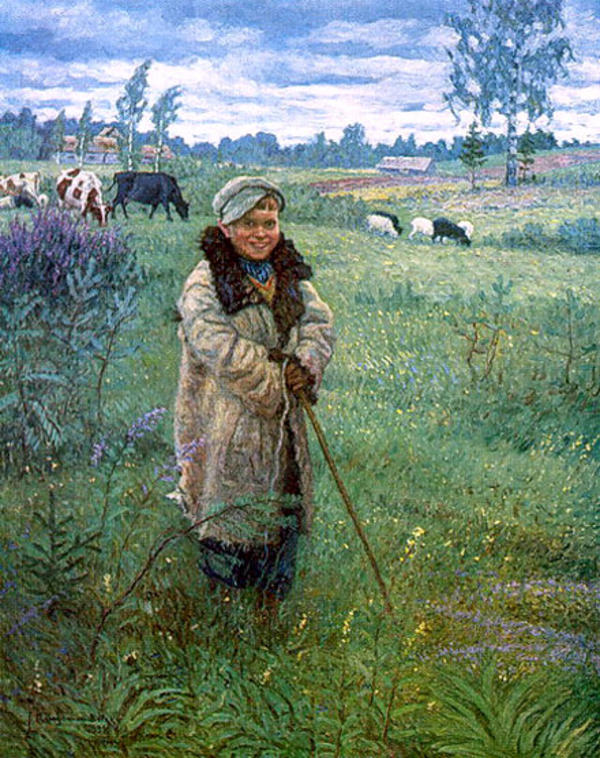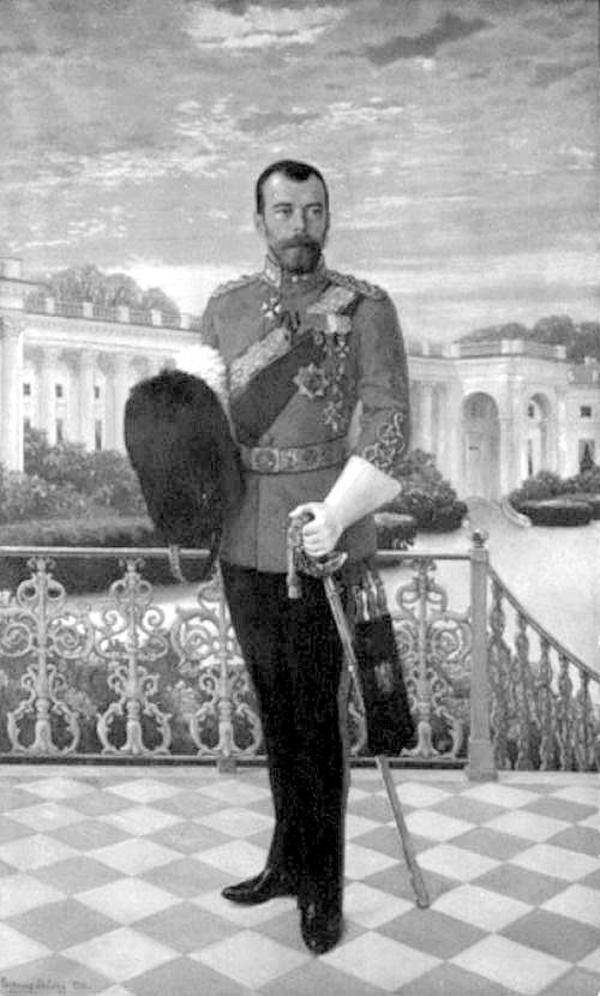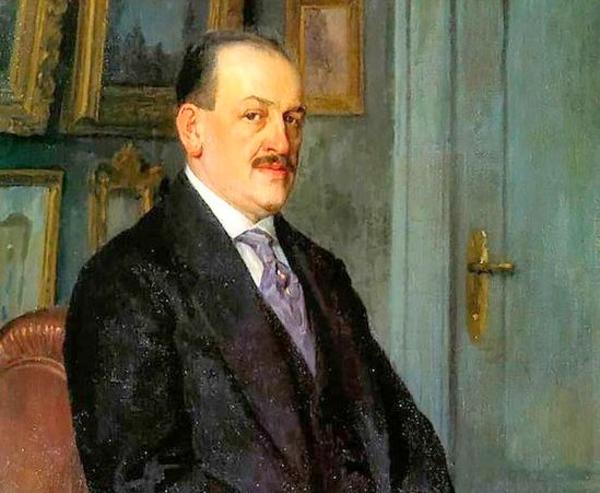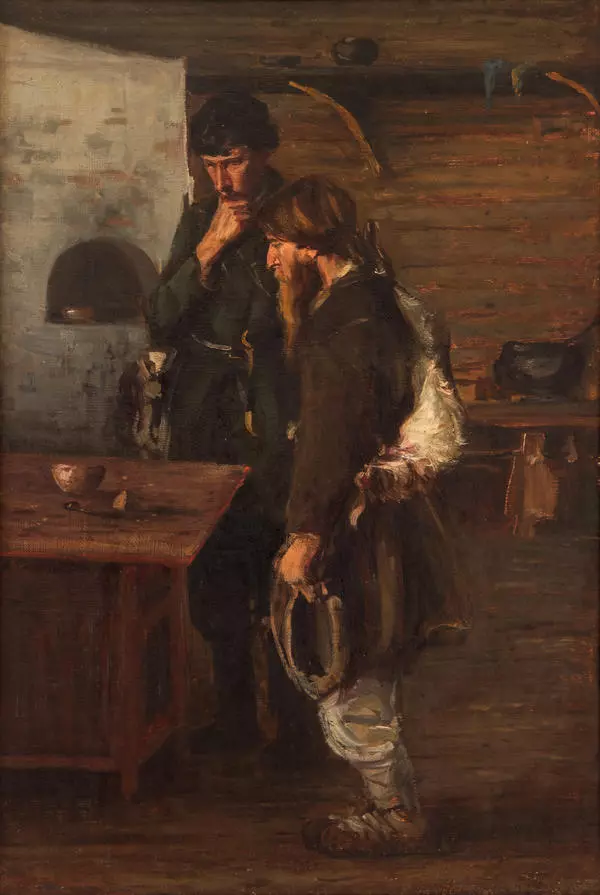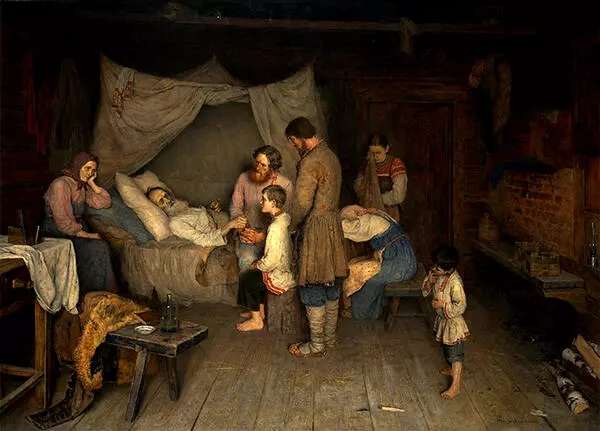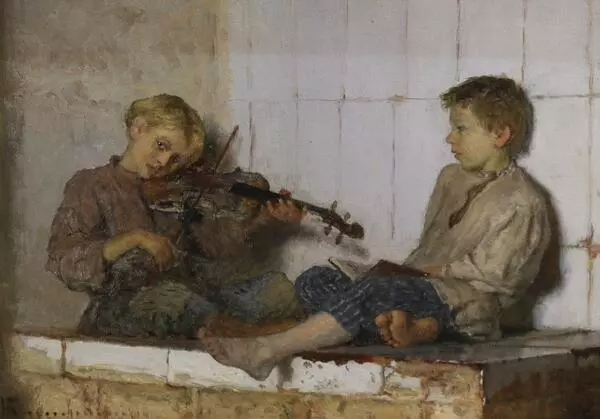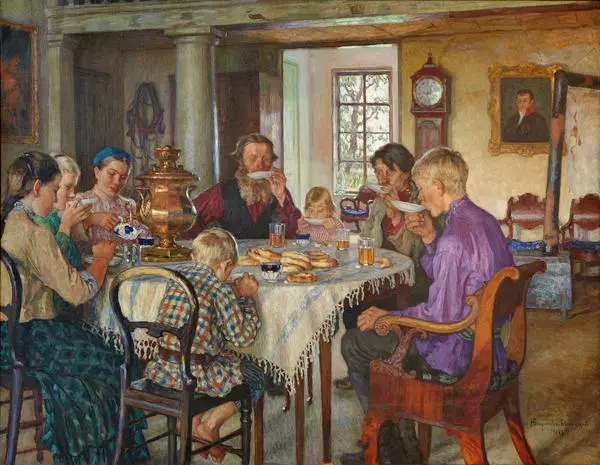The talented painter Nikolai Bogdanov-Belsky was a true rough diamond and a man of the people. The future artist was an illegitimate son of a peasant woman from the village of Shitiki, Belsky district, Smolensk province (modern Tver region).
His fate could have turned out differently if it had not been for a meeting with a famous teacher, philanthropist and enlightener, professor at Moscow University Sergey Rachinsky. Having learned about the village shepherd’s natural gift, Rachinsky opened the way for him to become an artist.
Thanks to the support of Rachinsky, Bogdanov-Belsky was able to graduate from the Moscow School of Painting, Sculpture and Architecture, where his teachers were Konstantin Makovsky and Vasily Polenov, and the Higher Art School at the St. Petersburg Academy of Arts, where Ilya Repin taught the artist-to-be.
A master of portrait, landscape and genre scenes Bogdanov-Belsky often turned to subjects from peasant life and raised acute social themes in his works. Since 1895 he was a member of the Association of Traveling Art Exhibitions. At that time he wrote the topical works Migrants, Seeing off the rookie, On the ferry, Reading the newspaper. News from the war.
This small sketch called The Shepherd Boy was produced during the Peredvizhniki movement period of the artist’s creative work and is now housed in the Bryansk Regional Museum of Art. Thanks to the choice of light color scheme and the use of fast brushstroke technique, the picture conveys the feeling of calmness and coolness of a cold autumn day.
The artist pays special attention to scenes from the life of peasant children.
